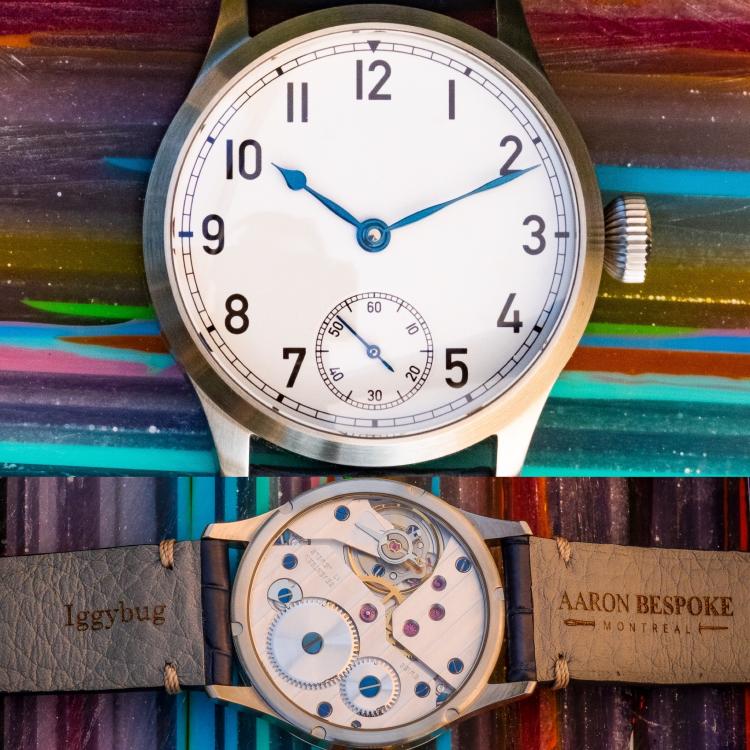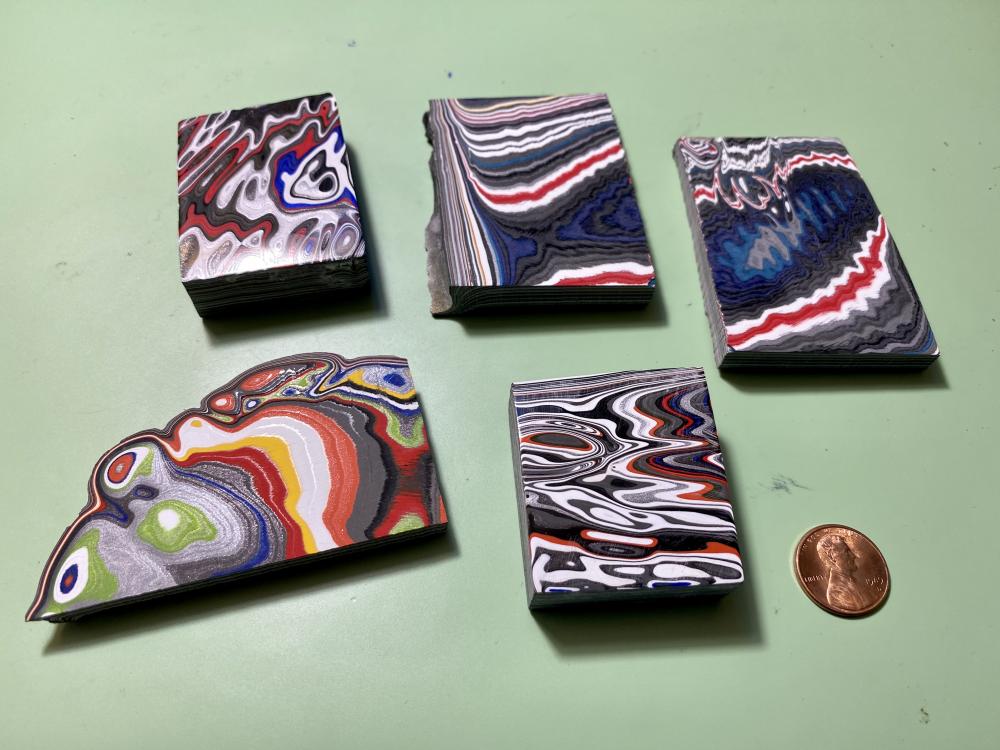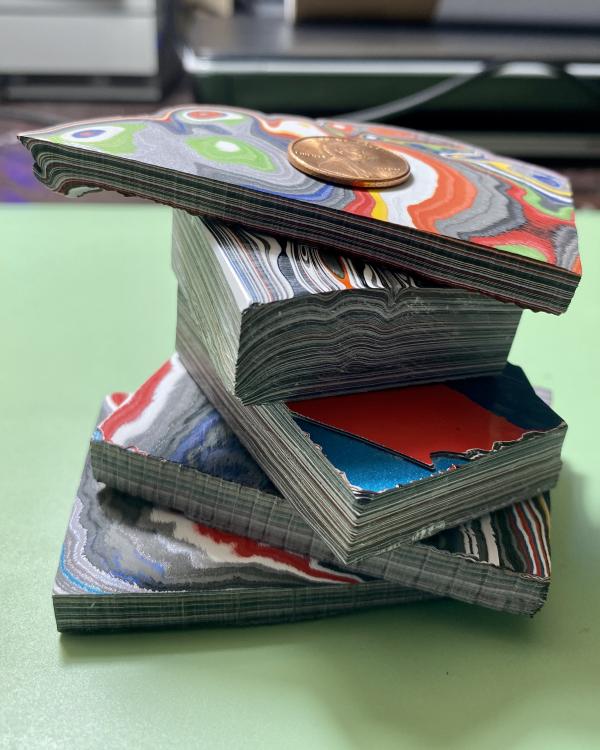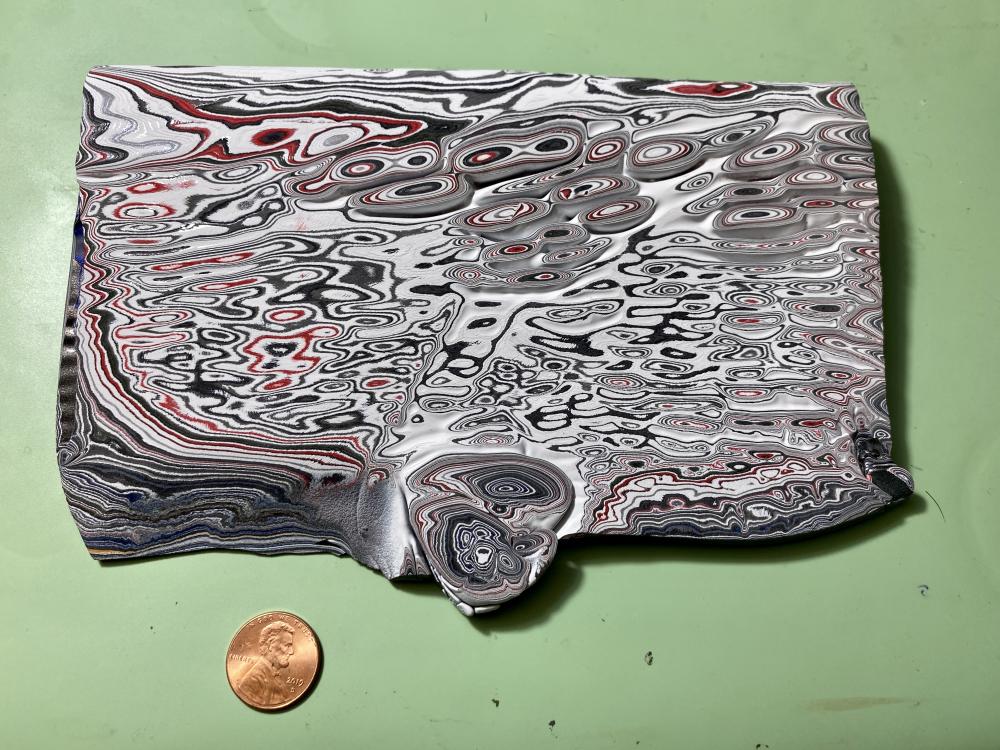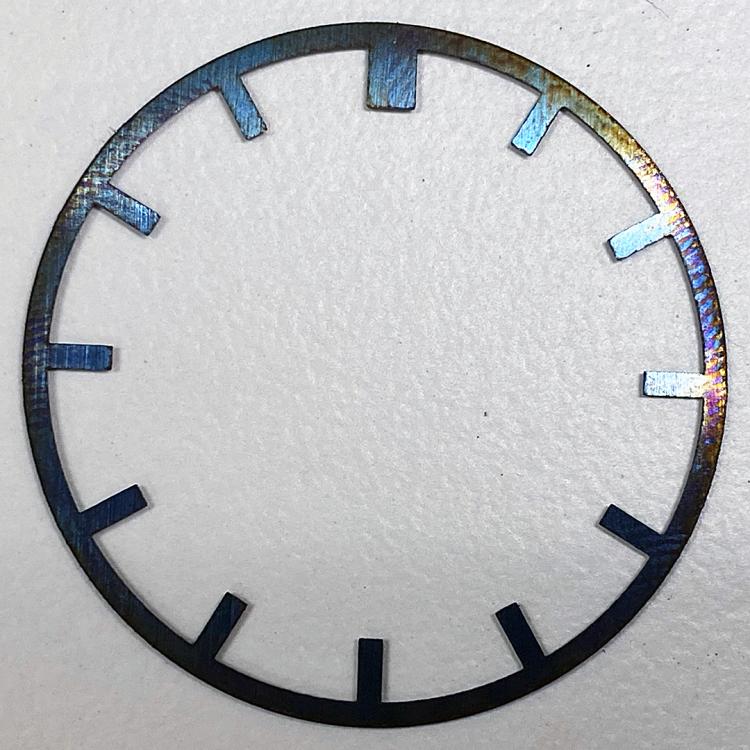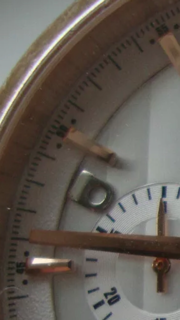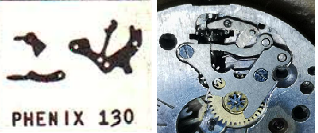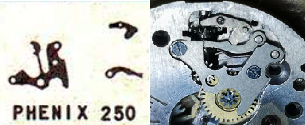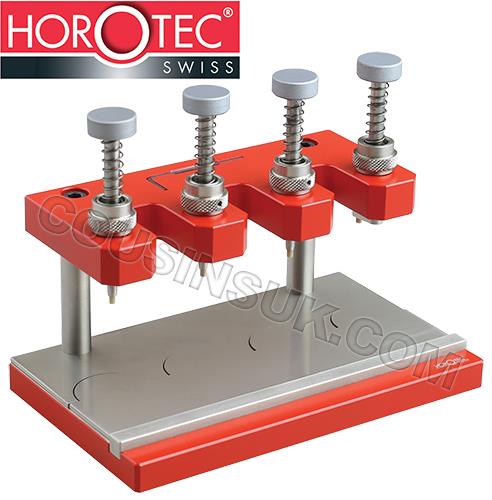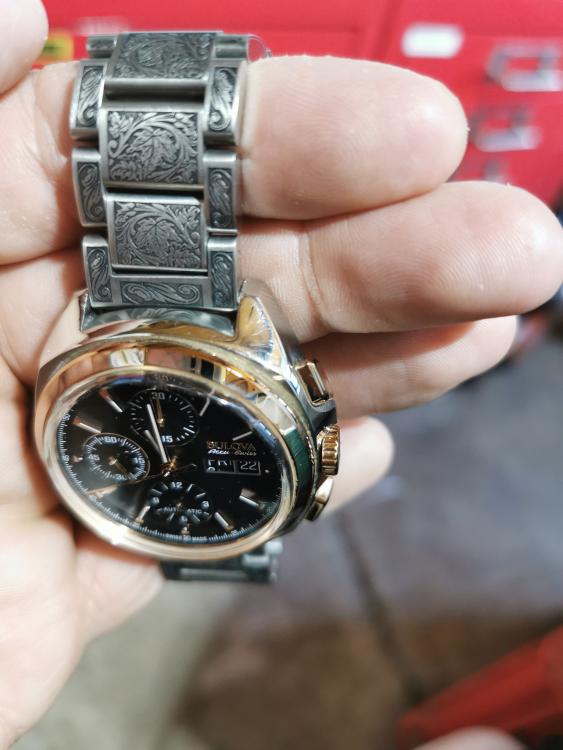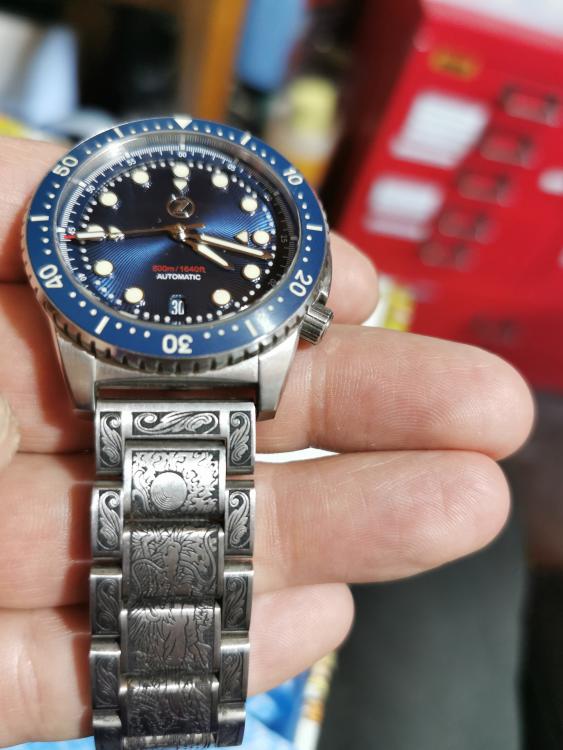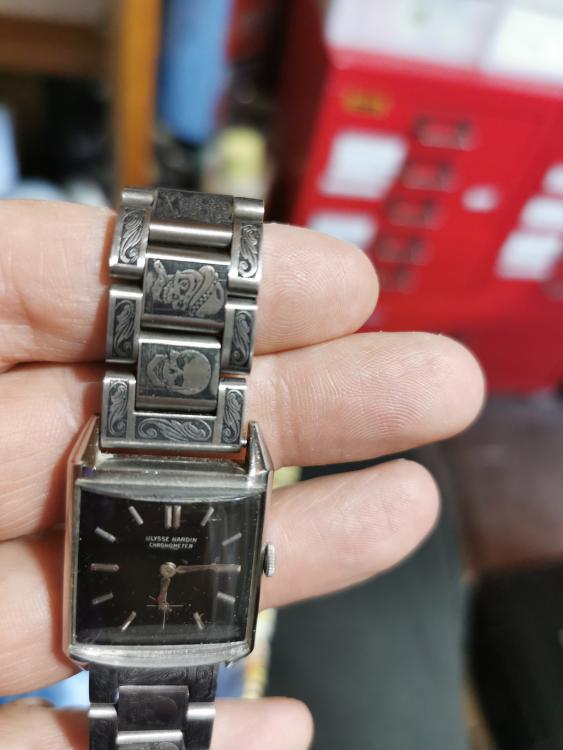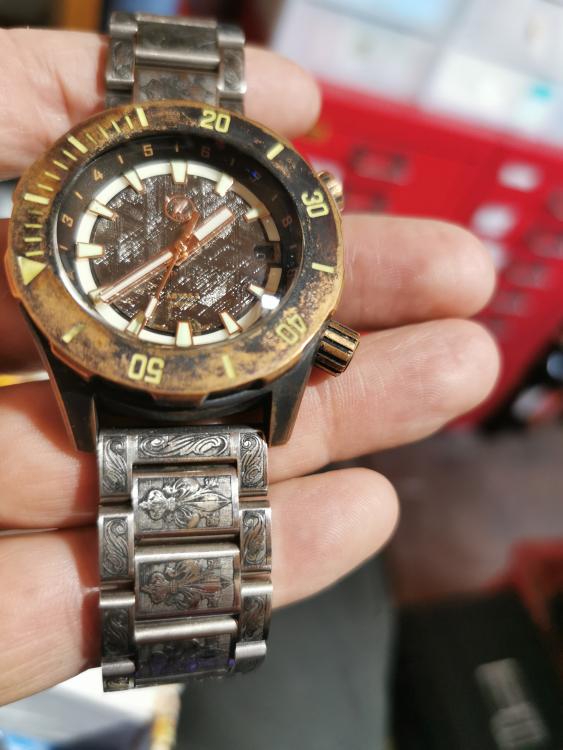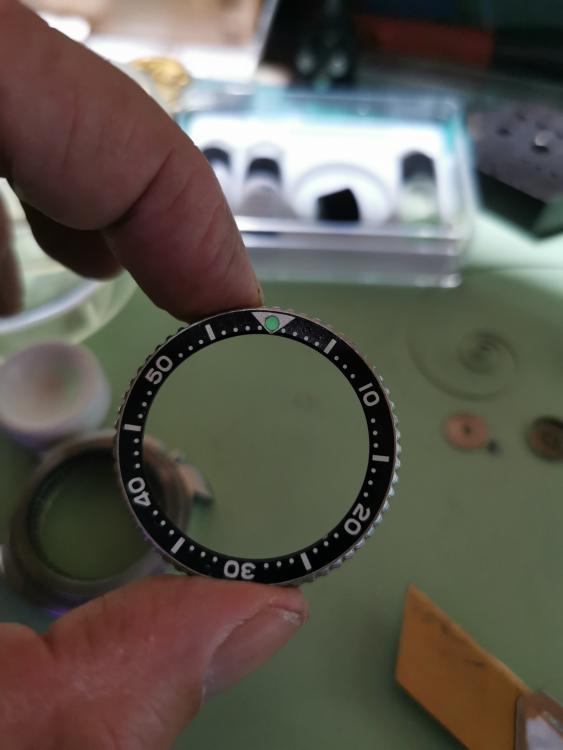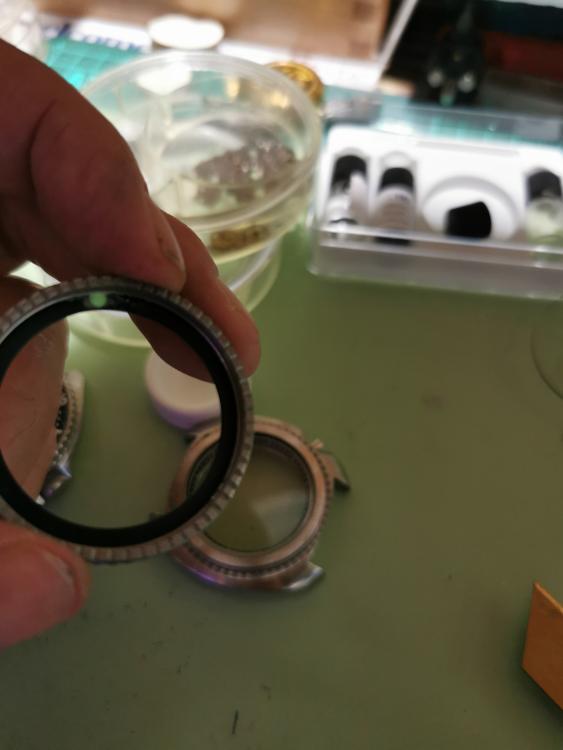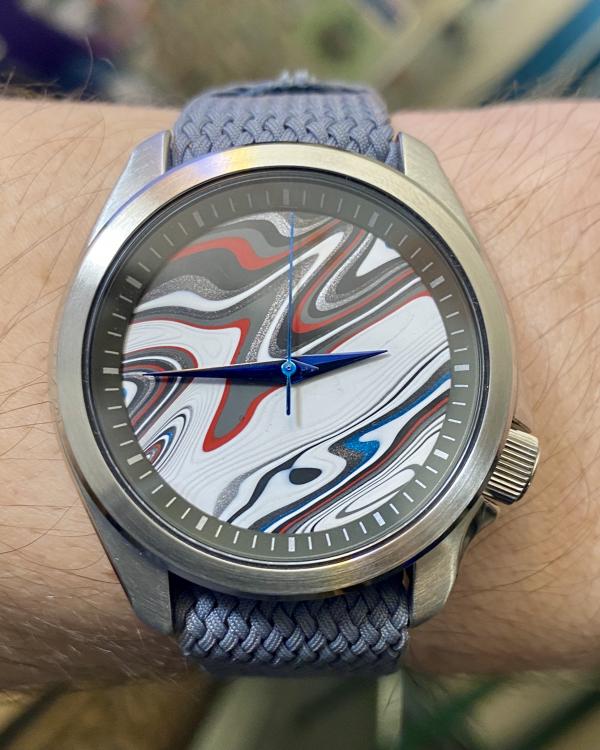Leaderboard
Popular Content
Showing content with the highest reputation on 12/17/20 in Posts
-
Theoretically what you're saying should be correct if the factory adjusted their watch correctly in the first place. But in this particular example were talking about a American pocket watch. I will give you an example of my fun yesterday at work. A nice Hamilton hopefully in the final phases of getting it to keep time. I was looking at the balance wheel and was horrified that it look like my upper jewel is now broken? This is because it was way way too much end shake and the upper pivot appeared to have way too much site play like maybe it was missing? Take it apart look at the balance it's perfect. Look at the hole jewel it visually looks fine push on it with my tweezers it wiggles around. The two screws holding on the capstone nice and tight so there was no problems there. Disassembling the hole jewel in the brass setting visually looked fine but had way too much side to play. Measuring it's diameter it did not correspond to what it's supposed to be. Fortunately we had replacement jewels replacing it things look much better in timekeeping improved. Then whoever had put the jewel setting in had whacked it a couple of times with a staking set punch in an attempt to spread it to work and it probably would work for most people who weren't paying attention. Moral of the above story with an American pocket watch anything that can be changed moved played with conceivably has been unfortunately. Then even if things are reasonably good as a reminder our modern timing machines with liquid crystal displays nifty digital numbers of exact milliseconds beat didn't exist when these watches came into existence. Didn't even exist for most of their life. Really up until relatively recently the timing machine of choice spit out paper and how close the lines were together how closely you were in beat. It's only really now with our nifty digital machines do we get really obsessed with all of the stuff. As this discussion is really how to adjust the escapement I thought I would attached a hand that was some light reading. Escapement handout wostep nscc.pdf2 points
-
2 points
-
I've been doing this a couple of decades, and for 2 arm balances have never had a issue seeing amplitude without a machine within a few degrees. Maybe that my teacher was a 6'4" Croatian scared it unto us? I like John's highlighter and UV but will use it on 3 arm balances down the road- thing is if a watch is modern enough to have a 3 arm balance 99.9% chance lift angle is referenced somewhere. It's not that hard, and is a good skill, to see amplitude on a two arm balance. Lighting can make a big difference, sometimes when I put a watch on the mic I can't see it, shift the light and boom. 100 years ago the old guys 100% were aware of amplitude and when you service an unabused watch, high end, from that time and it hits perfect rates in 6 positions with terrific amplitude it's not because the previous watchmakers were going "well seems ok!". Especially for railroad grade watches or anything else that would be a high confidence piece. All that said, and in line with John again, sometimes good enough is great. I just did a 50s Rolex that is in a donor case, dial from?, balance from some low grade donor (really low grade), to fit that balance the previous guy filed down the pallet cock and the end of the pallet fork, and of course it needed a staff as I got it with a broken and bent pivot, they reamed the cock to friction fit the non original stud, and the hairspring had about 8 slight bends in the flat and round. After making a staff and truing the spring as well as can be, it holds 260 degrees in the flats, and after some poising went from 500s delta vertical to 50s overall 6 positions. Lift angle for that caliber is 40 degrees, by visual observation it was more like 44/45. Still astonished it managed the rate it did. In "3 positions" looks even better hahaha.2 points
-
For the past few months, I’ve been working on a custom dial project. I’m still not ready to show my first production examples, but the project has gotten to the point where I’m comfortable sharing my progress. I’ve been documenting this process, and am committed to sharing my process notes. I believe in open source information, and I’ve benefited immensely in watches (and in life generally) from the wisdom and experience of other people who have been willing to share what they know with me. My hope is that by sharing my process notes, I might be able to encourage other folks to take a risk and try to make something cool. I’ve never attempted anything like this, and even if this project is ultimately unsuccessful it has been a ton of fun. I'm sharing my progress and process notes on this forum because folks here have been incredibly friendly and patient with me. If you have any questions about my notes, please feel free to let me know and I'll try to explain things better. I'm happy to answer any questions, and I'll be sharing more photos as I can. I've received a number of comments from people I've been corresponding with that essentially conclude that "this is too hard to pull off". Bur for the serendipity of finding a source of half-height Seiko dials and having free access to an incredibly expensive precision saw, I would have agreed. If anyone has suggestions or concerns that I'm missing something key, please let me know. Background: Seiko & ETA 6498 Custom Watches My project started with customizing my own Seiko watches, and with assembling several custom ETA 6498 watches using available parts from Chinese sellers on eBay. I greatly enjoyed manufacturing my own ETA 6498-1 based “marine watch” using high quality components, and produced a watch that is nearly equal to the Stowa Marine Original I wanted but couldn’t afford. I could have saved more money using lower-quality components, but instead assembled a watch using high quality components (heat-blued hands, an especially nice 41mm case with a sapphire crystal, an elabore-grade ETA 6498-1, etc.) to build a final product that was high quality but still significantly less expensive than the Stowa. Here's my 6498-based "Marine Watch" On the Seiko side of the house, I’ve built a couple of custom Seiko watches using some of the really amazing dial and hand combinations available from lots of internet sellers. (My favorite seller is called Lucius Atelier.) In browsing the offerings of several different Seiko part dealers, I saw that some suppliers sold higher-end dials made out of meteorite, damascus steel, carbon fiber, and other neat things. Knowing how much I enjoyed building my ETA 6498 watch, knowing how many people enjoy modifying their Seiko watches, and being generally fascinated by exotic dial materials, I realized that it might be possible to design my own watch dials. I enjoyed reading many articles on restoring dials using decals, and thought a lot about using electrolytic-etching or laser-cutting to customize brass dials. It was at this point that I stumbled across fordite and fell in love ... Fordite Several months ago, I ran across a limited series of very expensive TAG Heuer watches that featured unique dials made out of “fordite”. There's no way I'll ever be able to afford once of those £5,500.00 watches, but I couldn't get the idea of working with fordite out of my head. (Here are some quick shots of my first fordite samples, to give folks an idea of what it looks like in unpolished slab form.) Fordite is also known as “Detroit Agate,” and it’s actual industrial waste. Back when car manufacturers used to spray paint cars by hand, they generated a lot of overspray. This overspray accumulated over the years, and hundreds of layers of overspray built up into large chunks of waste material. This stuff was repeatedly heat cured at the same time the painted cars were heat cured, and the resulting chunks of waste are durable and nice to work with. I don’t know the first time it was discovered that cutting open the waste chunks revealed beautiful and psychedelic patterns of paint, but for some years jewelers have been using lapidary techniques to create bizarre and fun jewelry with fordite. One of the things that I find particularly fascinating about this material is that it’s possible to source fordite from specific assembly lines. Consequently, one can obtain fordite in Jeep, Corvette, Cadillac, Peterbilt, and other colors. I’ve even obtained some fordite from the “Cadillac Ranch” in the Mojave Desert. It’s much softer and more fragile than “normal” fordite, but it also has a wider variety of colors and textures. In order to work with this specific soft fordite, I'm going to need to stabilize it using some cool lapidary techniques. Heat-Blued Steel I have been enchanted by heat-blued steel watch components for a really long time. I started researching how I might myself heat-blue steel with an eye towards designing and selling heat-blued steel watch hands compatible with Seikos and other watches. For quite a few reasons, this isn’t feasible (yet?), but I’ve enjoyed polishing and bluing steel pocket watch hands. As my dial project progressed, I realized that it wasn’t practical for me to add applied hour indices, and there are some significant obstacles to using film-free decals on the dials I'm making. I realized that some manufacturers of exotic-dialed watches got around the problem by attaching a short chapter ring directly to the watch dial. This solution really appealed to me, so I set about designing a chapter ring that could be cut out of very thin (0.01” or 0.254 mm) high carbon steel, polished, and then glued to the dial face without risk of fouling any of the watch hands. I worked with an engineer on Fiverr, who converted my really rough sketch of a chapter ring design into a DXF file. My first 20 carbon steel chapter rings are currently in production at a laser-cutting facility. I don't need to share photos of the steel I've heat blued here to prove that it's a work in progress. Temperature control is critical, and I'm going to be switching from a propane camp stove to a precision digitally-controlled laboratory grade Cole-Parmer StableTemp hot plate to get consistent, high-quality results. I know that large manufacturers, including Glashütte Original, are doing essentially the same thing: In this Glashütte Original watch assembly video, one can see them using a $50 digital soldering-station with a brass attachment to blue screws. I'd go that route myself, but my chapter rings are a lot larger and so I want a larger heating area with better temperature control. I'll specifically be using a 1" thick 4" x 4" block of aluminum mounted on the hot plate's ceramic heating element to ensure uniform heat distribution. Chapter ring, from concept sketch to technical drawing to first prototype. Obviously, I'm going to need to do a lot of polishing before I re-blue these for installation! [Continued ...]1 point
-
I started my first watch repair project today, a half skeleton Dreyfuss 1925 automatic. The watch functions well, I can set the time, change the date and wind the mechanism. It seems to be keeping good time, however, none of the chronograph functions work and the watch hasn’t been well looked after in general. Having stripped the watch down, the first thing that I found was a small metal part loose within the watch face. I can see that the part is identical to the small brackets that hold the face / movement in the case. However, there were 2 of these brackets screwed in situ when I stripped it down and it doesn’t appear as though there was a third one missing, so I have no idea where this piece came from?1 point
-
Just reading between lines here: 2 of these brackets screwed... And now a small bracket appears out of nowhere? Can we call it a baby-bracket?1 point
-
Glad I could help. Oh I see. FYI: you'd done the good work in identifying it as a Phenix (crescent with star) which of course cuts down the search parameters. I opened my Bestfit PDF and just did a search for 'phenix' and then next-next-next until reaching the keyless works silhouettes. When it was clear it wasn't the 130 the 250 shone out. And that would explain the shorter mainspring too.1 point
-
1 point
-
Since you're still waiting on an answer let's look at the keyless works for the 130 from Bestfit*... Obviously your setting lever spring is broken but even with that in mind there's not a good match on the shape of parts. But there's a 250... ... and that I'm sure you'll agree looks a lot more promising. The thing is you've embarked on a 10.5''' journey with the 130 and the 250 is only a 9.75'''. So let's start there. Do you want to confirm the size of the movement you have ... is it a 10.5''' or 9.75''' diameter? I can relay more information once we know we're not going down a blind alley. *I know you ask a fair few questions on this forum so are obviously doing a lot of activity and on a large variety of movements. Worth getting a Bestfit catalogue as it's a mine of information. Under a tenner: https://mccawcompany.com/product/bestfit-encyclopedia-books-111-111a-digital-download-pdf-version/1 point
-
How about letting us work with you from start to end of the next project you pick up. Not a bad idea, ha. what do you say?1 point
-
I'm having a minor confusion here? So the first part you have a donor movement balances in everything works fine? Then his service the watch but you have a reference to putting a new balance wheel in? So is this the balance wheel that up above was working fine or is this an entirely new balance wheel? If I make the assumption that the donor movement balance wheel was working fine and that's still the same balance wheel after servicing it's not working fine then there's probably still nothing wrong with that balance wheel. But if you find when you're tightening the bridge screw for the balance wheel balance stops spinning it may be the balance jewels if you took them out. It's usually not clear in the servicing guide but the end stones have a curved surface and a flat surface. In some watches there actually a different thickness whether there on the one side or the other. you want to make sure that the curved surfaces out because otherwise that is a place you'd lose your end shake. I am attaching a picture as that's always helpful hopefully.1 point
-
What the OP asked in his latest post is what material to use to make a shock spring. My suggestion would be to try again a feeler gauge blade, like for the impeccable setting lever spring he did already. Maybe 0.03mm or 0.05 thickness.1 point
-
1 point
-
0.02mm is a bit too much. But, where did you measure? The pivot there is tapered normally, so it will be smaller at the end and larger a mm or two back from the tip. When I make tubes I usually drill 0.01mm smaller than the smallest part of the pivot, then use a tapered broach to bring it to final size. When broaching check often, and when the hand fits about 1/3 of the way it needs to go with normal pressure (you can still pull it back off with tweezers), stop. That should be a good friction fit for a chronograph hand.1 point
-
Correction: You can also loosen" THE COCK SCREW" 2 to 3 turns to release presuure on endstones. I had written "stud " instead of screw. Loosen the screw to a point that staff shows a bit of emdshake, nominally .02mm endshake is ideal. If the issue turned out to be "no end shake" you might want to shim up balance cock or bridge to create some endshake.1 point
-
Any regulation with an imperfect terminal curve, alters the position of impulse pin. Anytime you touch the hairspring coil to center, even level it, etc, may practically alter the position that impulse pin comes to rest at.1 point
-
This is the direct link about the Helvetia shock protection. Great information. https://www.helvetiahistory.co.uk/helvetia-shock-protection1 point
-
1 point
-
Hahaha, the number of times I've been ****** because something should have been. Welcome to the club.1 point
-
On mine there is. I have a Microset because I work both watches and clocks and it will test both. The lift angle can be pretty much anything I want. I haven't pushed to see if there is a limit to what can be entered.1 point
-
Obviously, there are many ways to skin this cat. I am not sure how much one is better than the other. My approach to this would be: 1. Remove the pallet fork. 2. Adjust the hairspring collet until the impulse jewel is visually in line with the escape wheel jewel and the pallet jewel. At this point the balance arms should be 90 degrees away from the line. In other words the roller table should be positioned so the impulse jewel is at a symmetrical 90 point from the arms. note the relationship with the balance arms and balance cock. 3. Install the pallet fork and visually check to see if the banking pins are equidistant from the fork with the impulse jewel in alignment with the jewels. If not, slowly rotate the balance back and forth and note the position of the fork when the impulse jewel clears the fork. Check the position of the pins at that point. Adjust as necessary to make them equidistant from the fork. 4. This should be a good starting point to check the beat error, amplitude and drop. 5. Fully wound and running, make slight adjustment to the pin positions for best amplitude. I don't open them up any more than is necessary to get the best amplitude. 6. If everything is working well, you should be able to minimize the beat error with slight adjustments to the pins. This is based on the assumption that the pallet fork is free to move without any hesitation when the watch is moved through positions to check it falls freely in both directions. Your mileage my vary.1 point
-
Finding a specific shock spring for a specific caliber is difficult to say the least. In the best fit books there are hundreds listed. For example I repaired/ serviced a watch fitted with a Seiko movement that needed a new shock spring. Cousins actually contacted Seiko on my behalf but was told they do not sell them to the trade. Therefore I had to modify a spring I had in my stock.1 point
-
When restoring a clock you need to know what it would be like when it was new. You should take it to that stage and nothing more. You could alter its value to the extent it could end up worthless. In my time I would always follow after researching the methods that were used in times past. Whatever you do don’t use motorised tools such as polishing mops or those dreadful dremel tools.1 point
-
You very definitely do not want to demagnetized the entire movement. Typically with electric watches balance wheel type there will be permanent magnets. There's usually one to hold the escape wheel or whatever it's called in place and this watch has one of those. Then the other problem would be here inducing up rather strong magnetic field with a watch that has a coil and at its going to generate energy that conceivably could burn the diode out may be. The diode's there to protecting its back EMF from its own the coil and a very strong magnetic field conceivably would be worse in the field its own coil could generate. Then personally I would doubt that the hairspring would get magnetized because it should be a nonmagnetic hairspring.1 point
-
Can you check it on the timegrapher? The logical action is to bring it back to who has repaired it.1 point
-
1 point
-
We have two problems here. The first problem that actually is very common is sticker shock over the cost of getting a watch repaired. Then if it's a watch like this which had limited quantity of people to repair it in the first place the cost will go up. This is of course one of the reasons this group exists some people can repair their own watches and not have to pay to have it done. But unfortunately repairing one watch like this that requires specialized tools means that is not going to be cheap even for you to repair. Then the chances success also drops because these watches definitely require somebody with the skill and knowledge to repair them. Then the second problem that the watch that you're looking to purchase is made by Bulova? I have a link if you scroll down the link you'll get to a section titled "ESA". This is where the other watch companies feeling left out that they didn't have a tuning fork watch make one and attempt to get around Bulova's patents. They're not entirely successful so if you notice on the movement is a reference licensed to Bulova. So the Swiss come up with two separate movements ESA 9162 (date only) and ESA 9164 (day and date). Sold by a whole variety accompanies who put their name on the movement. Also they come in a variety of colors basically Omega rose gold others will be goals and some will be nickel plated. So to replace your Omega movement you just need to get one of these movements but you want to be careful that the seller is actually selling you one of these and not one of the Bulova movements which will not replace your movement. Hopefully that makes sense if were lucky the seller is just confused because it does have the word licensed the Bulova and maybe they think it meant that Bulova made the movement which they did Not. https://electric-watches.co.uk/movement-types/tuning-fork/1 point
-
1 point
-
1 point
-
1 point
-
I wind my wife up exactly the same way.The only difference is that's what gets her going. Hahaha1 point




